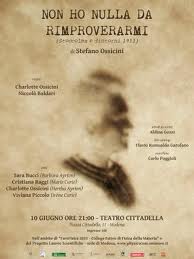News Archive
Stefano Ossicini tra i finalisti del 1° Premio Nazionale di Divulgazione Scientifica
A review on SiGe nanowires has been published by M. Amato, M. Palummo and Stefano Ossicini on Chemical Reviews. For more information see on the left in News Archive
Silicon Germanium Nanowires: Chemistry and Physics in Play, from Basic Principles to Advanced Applications, Michele Amato, Maurizia Palummo, Riccardo Rurali, and Stefano Ossicini Chem. Rev., Article ASAP
The trend predicted by Moore's law sets forth strict requirements on the electronic properties of materials that cannot always be satisfied by conventional semiconductors. Thus, the last twenty years and, in particular, the first decade of this century have witnessed a progressive interest in materials and devices with reduced size and dimensionality. Nanostructures and nanomaterials have been considered the key development for next generation technology, due their ease of processing, new properties and compatibility with the existent silicon (Si) microelectronics. Great progresses have been made, in particular regarding the use of Si nanostructures in microelectronics, photonics, and photovoltaics. However, the scaling down of semiconductor structures to nanometer sizes alone does not satisfy the need of new unique properties in a variety of applications. On the other hand, the manipulation through alloying together with the variation of the size provides a natural platform for the development and creation of materials that present the desired properties but, at the same time, can be easily integrated into the existent Si technology. A meaningful example of this possibility is given by the use of silicon germanium (SiGe) nanostructures.
2014 PhD call opening The call for admission to the 2014 Ph.D. courses has been recently published. 10 places are available at the PhD course in Physics and Nano Sciences.
August 2013 - New Publication from the group on The Journal of Physical Chemistry: "Ab Initio Electronic Gaps of Ge Nanodots: The Role of Self-Energy Effects"
Nanostructuring of a material leads to enormous effects on its excited state properties. This study, through the application of different state-of-the-art ab initio theoretical tools, investigates the effect of size on the electronic gap of germanium nanocrystals highlighting similarities and differences with respect to equivalent silicon nanostructures. We performed both GW and ΔSCF calculations for the determination of their electronic structure. While it is known that ΔSCF corrections to the Kohn–Sham gap vanish for extended systems, the two approaches were expected to be equivalent in the limit of small clusters. However, it has been recently found that for hydrogenated Si clusters the ΔSCF gaps are systematically smaller than the GW ones, while the opposite is true for Ag clusters. In this work we find that the GW gaps are larger than the ΔSCF ones for all the Ge dots, with the exception of the smallest one. Such crossing between the ΔSCF and the GW gap values was not expected and has never been observed before. Moreover, also for hydrogenated Si nanocrystals we found a similar behavior. The origin of this crossing might be found in the Rydberg character of the LUMO of the smallest clusters and can also explain the qualitative differences in the comparison between GW and ΔSCF found in the previous studies.
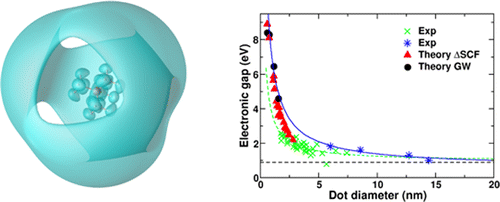
30/07/2013 A theater text of Stefano Ossicini published by ScienzaExpress Edizioni: "Non ho nulla da rimproverarmi. Stoccolma e dintorni 1911"
24/05/2013 Stefano Ossicini is the winner of Premio Enrico Fermi Cecina per la divulgazione scientifica
Il premio “E. Fermi” si svolge da oltre 10 anni con la finalità di arricchire l’offerta formativa scolastica con una serie di attività dirette a diffondere la cultura scientifica, a dare ampia e mai “unilaterale” lettura di ogni evoluzione scientifica, ad educare alla scoperta ed al confronto di idee con spirito libero. Nello stesso l’iniziativa rappresenta un ampio contenitore di eventi culturali che coinvolgono l’intera comunità, che, nel tempo, ha mostrato di apprezzare la quantità e qualità degli interventi.
April 2013 A publication within the European NASCENT collaboration on Silicon Tandem Solar Cells has been published
Silicon nanocrystals from high-temperature annealing: Characterization on device level Author(s): Löper, P.; Canino, M.; Lopez-Vidrier, J.; Schnabel, M.; Schindler, F.; Heinz, F.; Witzky, A.; Bellettato, M.; Allegrezza, M.; Hiller, D.; Hartel, A.; Gutsch, S.; Hernandez, S.; Guerra, R.; Ossicini, S.; Garrido, B.; Janz, S.; Zacharias, M. Silicon nanocrystals (Si NCs) embedded in Si-based dielectrics provide a Si-based high band gap material (1.7 eV) and enable the construction of all-crystalline Si tandem solar cells. However, Si nanocrystal formation involves high-temperature annealing which deteriorates the properties of any previously established selective contacts. The inter-diffusion of dopants during high-temperature annealing alters Si NC formation and limits the built-in voltage. Furthermore, most devices presented so far also involve electrically active bulk Si and therefore do not allow a clear separation of the observed photovoltaic effect of the nanocrystal layer from that of the bulk Si substrate. A membrane route is presented for nanocrystal based p–i–n solar cells to overcome these limitations. In this approach, the formation of both selective contacts is carried out after high-temperature annealing and therefore not affected by the latter. p–i–n Solar cells are investigated with Si NCs embedded in silicon carbide in the intrinsic region. Device failure due to damaged insulation layers is analyzed by electron- and light beam induced current measurements. Open-circuit voltages of 176 mV are shown for the NC layer. An optical model of the device is presented for improving the cell current. Comparison of the optical limit and the measured short circuit current demonstrates that the device is governed by recombination within the absorber layer.
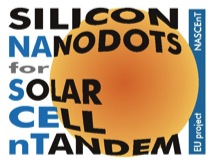
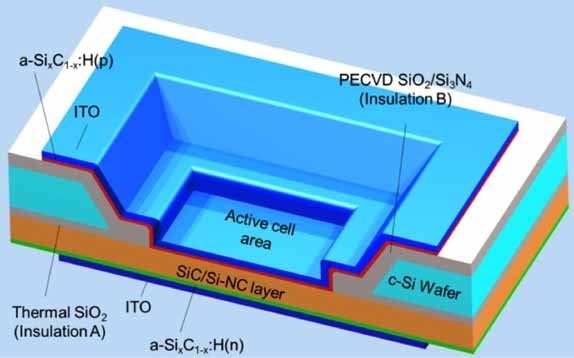
New Publication from the group on Nature Photonics
Scientists have investigated the role of nanoparticle interplay on the carrier multiplication dynamics of two interacting silicon nanocrystals for photovoltaic applications. The results of this research, published on Nature Photonics, provide theoretical foundations to recent experimental observations in the field of silicon-based photovoltaics and can foster the development of nanostructured third-generation solar cells.
For more informations, please click on the link below:
http://www.nature.com/nphoton/journal/v6/n10/full/nphoton.2012.206.html
30/04/2012 New Publication from the group on Nano Letters
Silicon germanium alloying is emerging as one of the most promising strategies to engineer heat transport at the nanoscale. Here, we perform first-principles electron transport calculations to assess at what extent such approach can be followed without worsening the electrical conduction properties of the system, providing then a path toward high-efficiency thermoelectric materials.
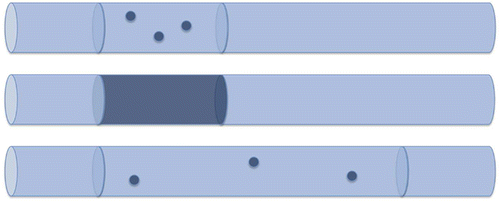
12/04/2102 A book on Fraud, Errors and Illusions in Science of Stefano Ossicini published by Neri Pozza: "L’universo è fatto di storie non solo di atomi"
Steven Weinberg, premio Nobel per la fisica, recentemente affermava: «Per quanto ne sappia non vi è mai stato una caso di aperta falsificazione dei dati in fisica». Gli scandali esplosi in questo primo scorcio di secolo si sono immediatamente incaricati di smentirlo. Negli ultimi anni, infatti, false scoperte, errori, risultati esagerati sono così aumentati che molti osservatori hanno concluso che non solo i truffatori debbano essere scovati e puniti, ma che la stessa struttura della ricerca scientifica sia da porre sotto indagine. Questo libro narra un secolo di storie controverse, frodi, errori, illusioni prese dal fronte della scienza: dai raggi N alle nanotecnologie, dalla natura della luce ai nuovi elementi chimici, dalle forme dell'acqua alle energie inesauribili. Assistiamo in questi anni all'emergere di una nuova tipologia di fare scienza, una sorta di arrangiamento ibrido tra università, centri di ricerca, ruolo del pubblico, governi nazionali e sovranazionali, finanziatori e imprese private, dove il numero di ricercatori, esperimenti, analisi e pubblicazioni diventa sempre più grande mentre i normali meccanismi di controllo stentano a tenere il passo. La competizione diventa più spietata, la ricerca più frammentata, sponsorizzata, sempre meno guidata dalla curiosità e dalla ricerca della verità. I conflitti di interesse, finanziari ed etici, aumentano e i ricercatori a progetto, tipica forma postmoderna, che non possono avere una conoscenza d'insieme dello studio intrapreso, dei suoi scopi e metodi , non solo sono chiamati a svolgere spesso lavori ripetitivi ma in più sono costretti a produrre comunque risultati per sperare in una prosecuzione del progetto, per aspirare al mantenimento del posto. Ed ecco che nascono, inevitabili, tentazioni devianti. Certo è che i meccanismi di autocorrezione continuano ad essere un tratto distintivo della scienza, ma tutti dobbiamo conoscere come la scienza realmente opera per poter più correttamente giudicare. Una volta Peter Medawar, premio Nobel per la medicina, descrisse così i ricercatori: «Gli scienziati sono persone di temperamento molto dissimile, che fanno cose differenti, in modi fortemente diversi. Tra gli scienziati ci sono collezionisti, classificatori e compulsivi inseguitori delle nuove mode. Molti sono detective e molti sono esploratori. Ci sono scienziati-poeti, scienziati-filosofi e persino qualche mistico». Qualche tempo dopo scrisse, dispiaciuto, di aver dimenticato di aggiungere «... e anche qualche imbroglione».
New Publication from the group on Nature Materials
Published on Nature Materials a joint theoretical-experimental effort that demonstrated a bulk second-order dipolar optical susceptibility in Si waveguides.
For more informations, please click on the link below:
http://www.nature.com/nmat/journal/vaop/ncurrent/abs/nmat3200.html
Non ho nulla da rimproverarmi. Stoccolma e dintorni 2011
October-November 2011 In scena al Festival della Scienza di Genova a cura di Otium Teatro la commedia di Stefano Ossicini “Non ho nulla da rimproverarmi. Stoccolma e dintorni 2011” sulla figura di Marie Curie June 2011 First representation in Modena of the Theater piece “Non ho nulla da rimproverarmi. Stoccolma e dintorni 2011” about Marie Curie
